14-days Sailing – Split – Split N2 North Route 2
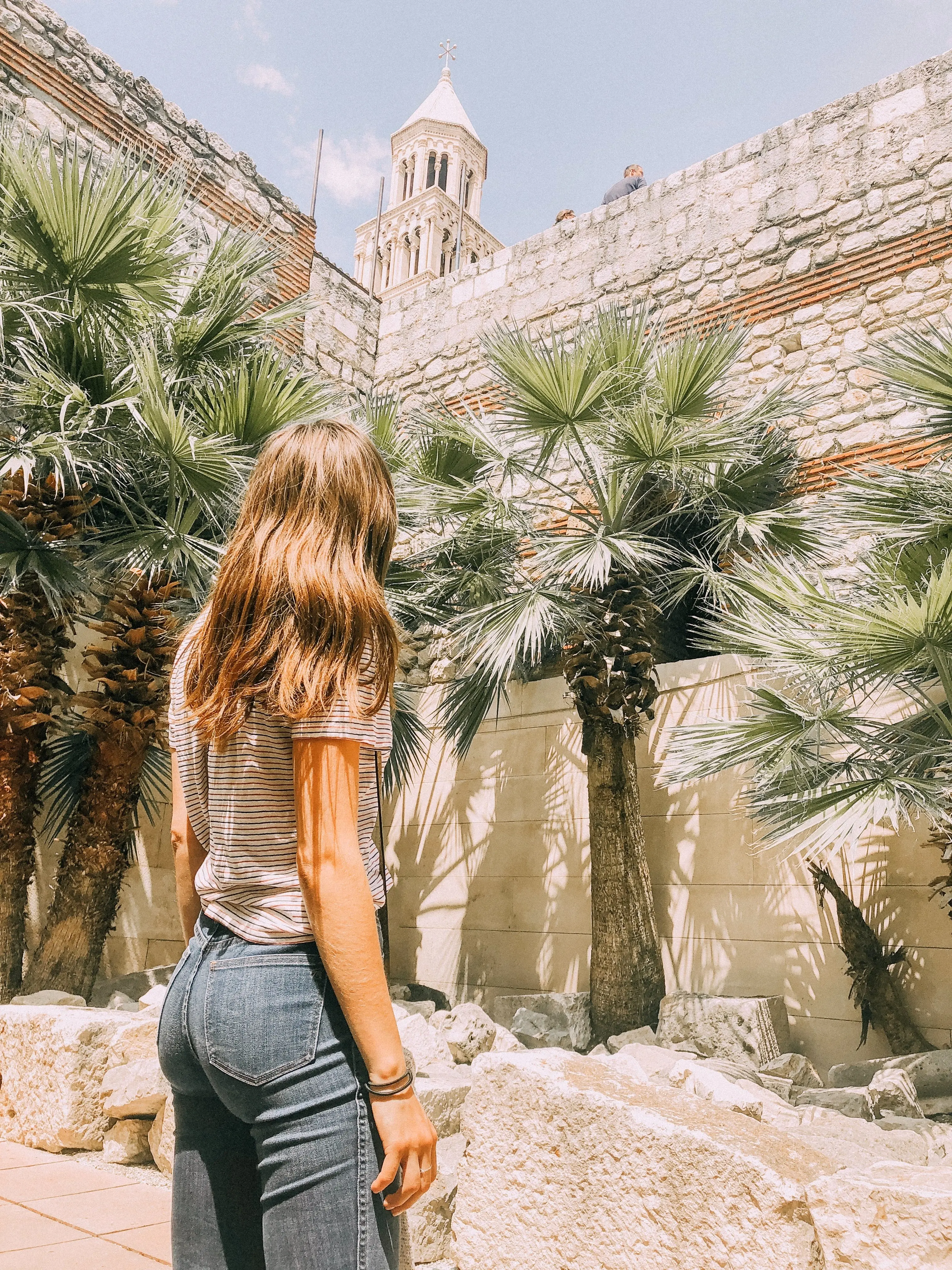
Day 1: Split - Primošten
The Primošten area was inhabited as early as the 7th century, with numerous emigration crises through history, due to its important strategic location. It is first mentioned under its current name in 1564, by which time it was already a fortified settlement on a small island. After the Turkish threat was over, the hard working people of Primošten have labored to develop their town, and it has seen only prospering since that time and today, all the while preserving its natural and cultural heritage. The Kremik marina of today, with over 400 berths in one of the safest places to anchor in the Adriatic, continues the centuries old tradition of Primošten as an important destination; today not so much economic or military, as a beautiful tourism one.

Day 2: Primošten - Skradin
Skradin is a city with a history 6000 years long, owing to its unique location in the central Adriatic, at mouth of Krka river. Since the time of the ancient Liburnians, the Greeks and Romans, and the Croatian princes of old, Skradin area was vital to the road and maritime routes passing through here from all four directions. It would take up several tomes to describe all the places of historic significance in the Skradin area, them being constructed on top of each others' remains through 6000 years of civilization. The nearby Krka waterfalls, today a Croatian National Park, are all the more reason not to miss out on Skradin. Today's Skradin Marina continues to serve sailors, in a tradition that goes back, even beyond the time of the origins of the city itself.
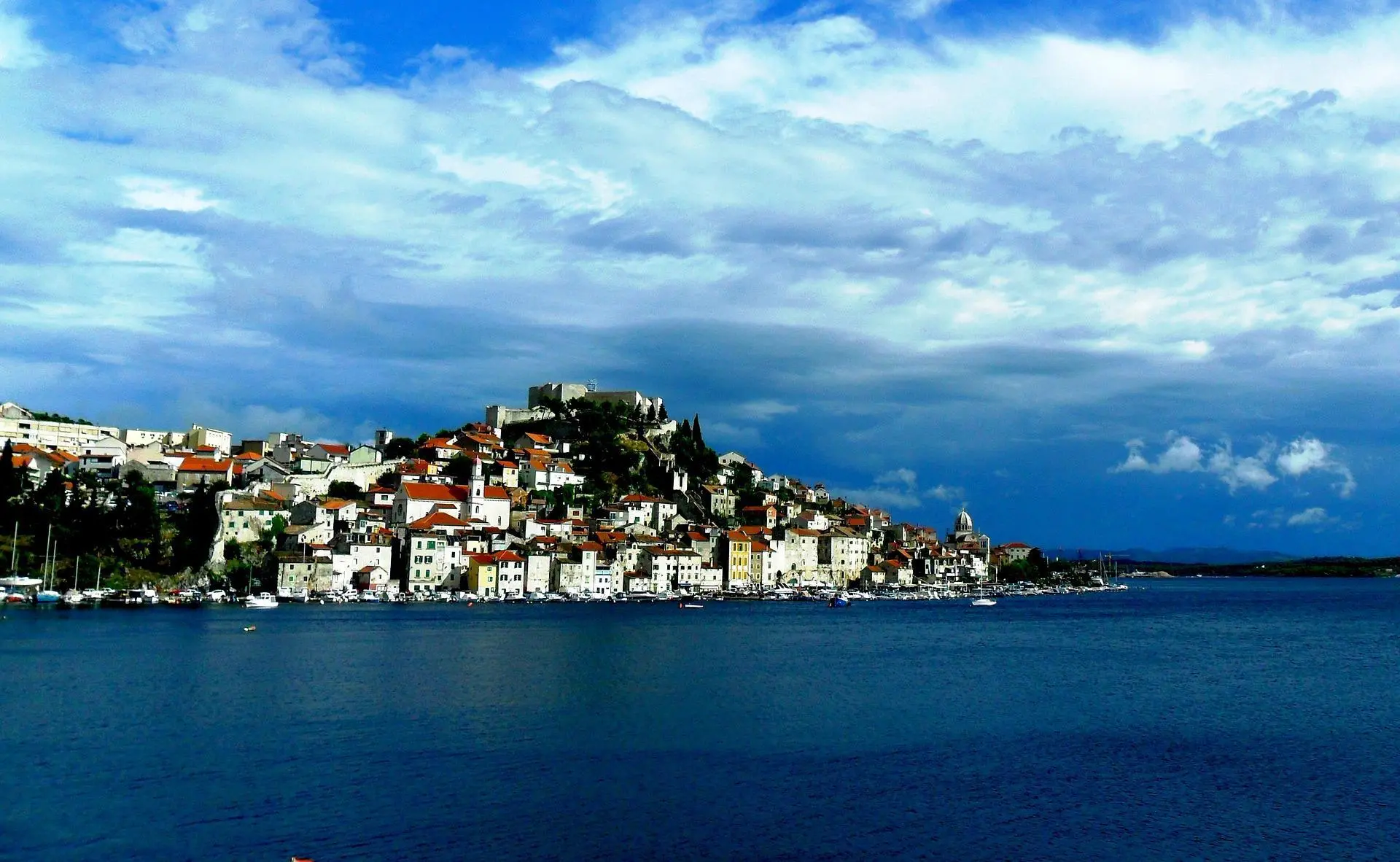
Day 3: Skradin - Vodice
The history of the town of Vodice goes back to ancient times, with archaeological evidence telling us it has been inhabited even before the 4th century B.C. Apparently, it was a prominent settlement in the Roman times, since the glass pottery collection discovered here is one of the most luxurious found anywhere in the old Roman Empire. The rich local history continued through Medieval times and the Turkish invasions, with Vodice first mentioned by that name in the 15th century. Many sites and monuments testify of the long, rich history of Vodice. Today, Vodice is the most renowned tourist center of the Central Adriatic, with gastronomic and cultural offering and range of options for recreation, as wide as you can imagine.
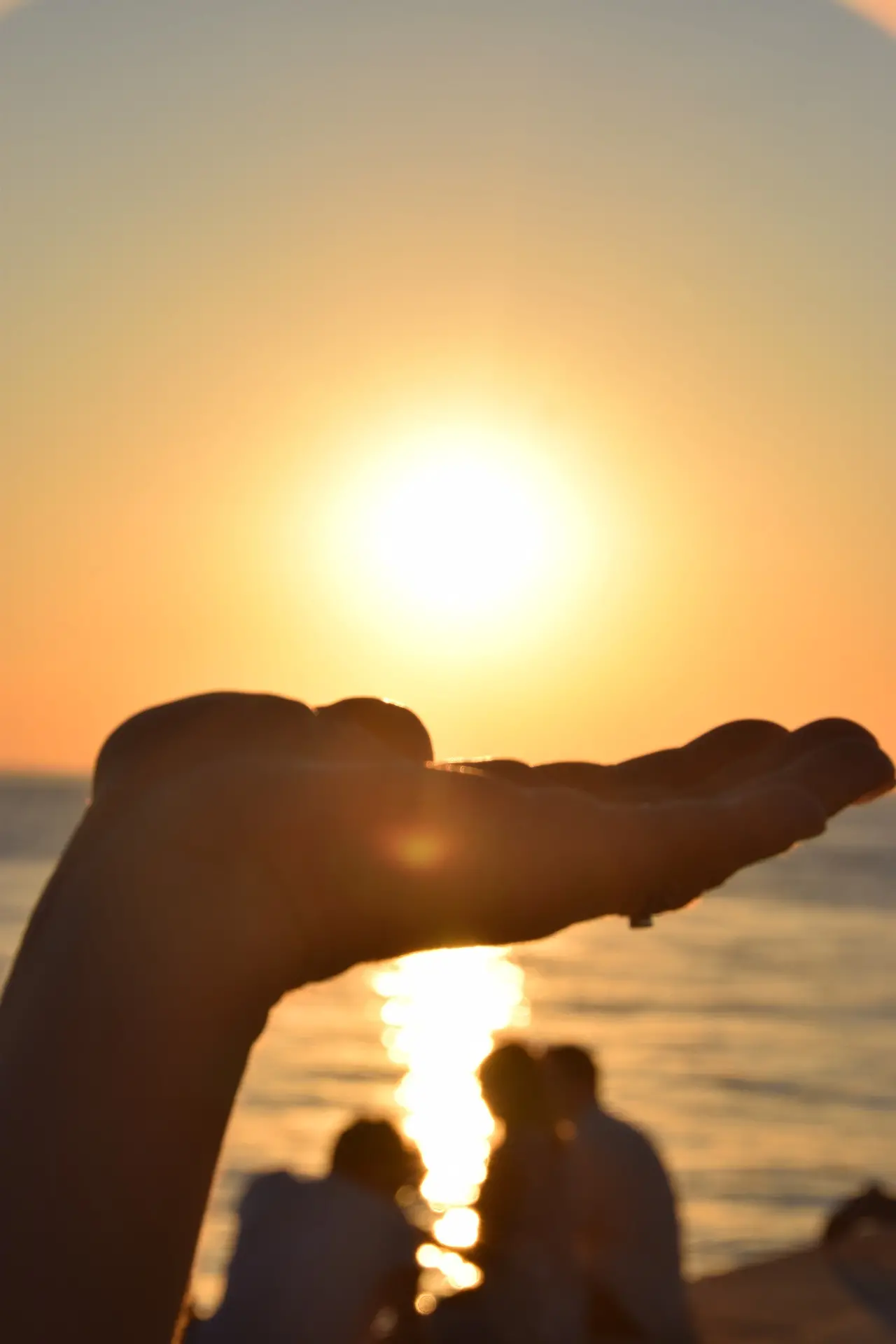
Day 4: Vodice - Tisno - Murter (Murter)
Tisno is a town settled on both sides of the 38m wide ravine by which it was named. The Murter side and the Tisno peninsula side are connected via drawbridge, 2m above sea level, with the depth under it 2.4m. In the summer the bridge is open from 9:00 to 9:30 and from 17:00 until 17:30. Today's town of Murter is an exceptional tourist destination. Not only is it, by itself, a beautiful Mediterranean town rich with history and tradition; but it is also in close proximity to several National Parks and Parks of Nature, as well as 170 islands in its aquatorium. Its marina, Uvala Hramina, has 400 berths, as well as 250 dry berths; and is well-protected against all winds.
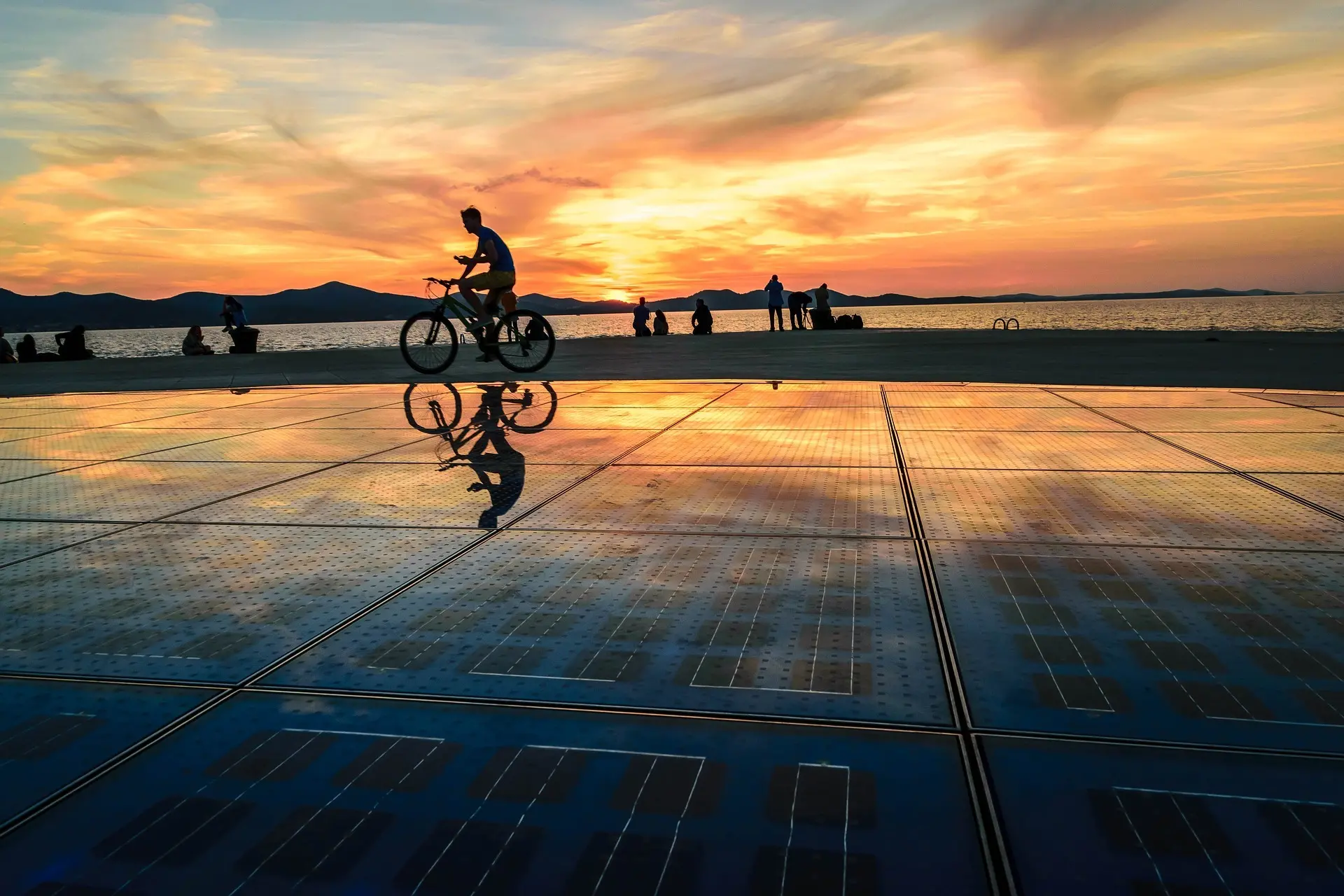
Day 5: Murter - Zadar
Zadar is the urban center of northern Dalmatia, a city with a 3000 year old history. It is surrounded with many places of natural beauty, and just as many places of historical significance, dating back to the Illyrian times. The old city center is located on a peninsula, and so the city of Zadar has several marinas of a large combined capacity, suitable for all seasons and conditions.
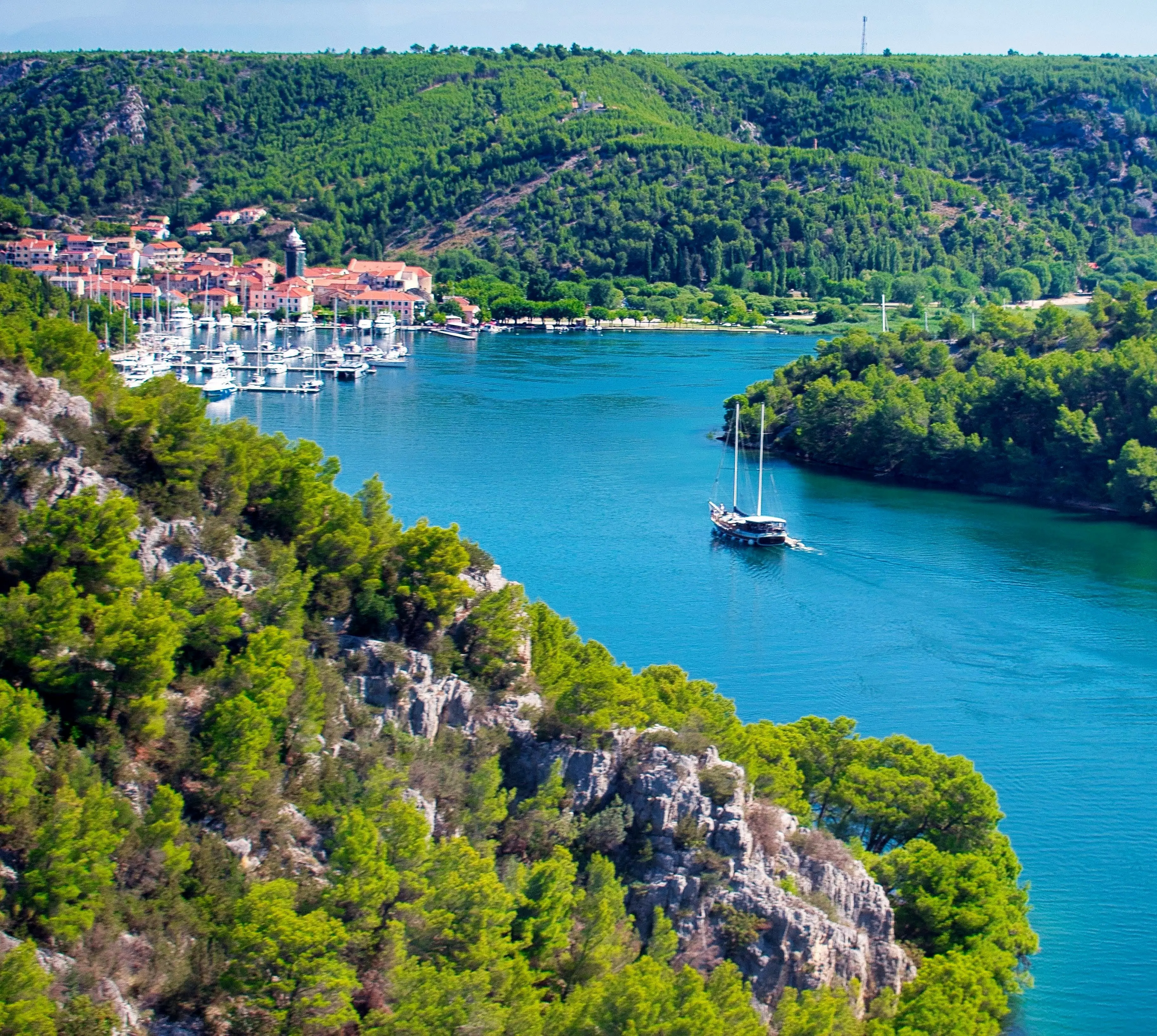
Day 6: Zadar - Žut
The largely uninhabited island of Žut is part of the Kornati National Park. With a surface of 15km2 and only 2km in width, it is very well indented and an excellent nautical destination. In the cove of Pod Ražanj there is a modern marina with some 100 well-protected berths; and in the largest cove of Žut, the ACI Marina is located, housing 120 berths. Žut is, as are all of Kornati, a site of pristine natural beauty, and a standard stop in any nautical odyssey through the Adriatic.

Day 7: Žut - Piškera
Piškera is the oldest seasonal fishing settlement in Croatia, meaning it has been inhabited (mostly by fishermen) only during main fishing seasons. It blossomed in the 16th century, due in part to the fresh water sources on the island itself and its neighboring isles. Today, Piškera shares the fate of many other old fishing villages in the Adriatic; it has become a tourist destination, closely focused on nautical tourism. Adjacent to Piškera, on the north coast of the isle of Panitula Vela, the ACI Marina Piškera is located, housing 150 berths together with all the accompanying content. Together with the similar marina on Žut, Piškera is the center of the Middle Adriatic nautical tourism.
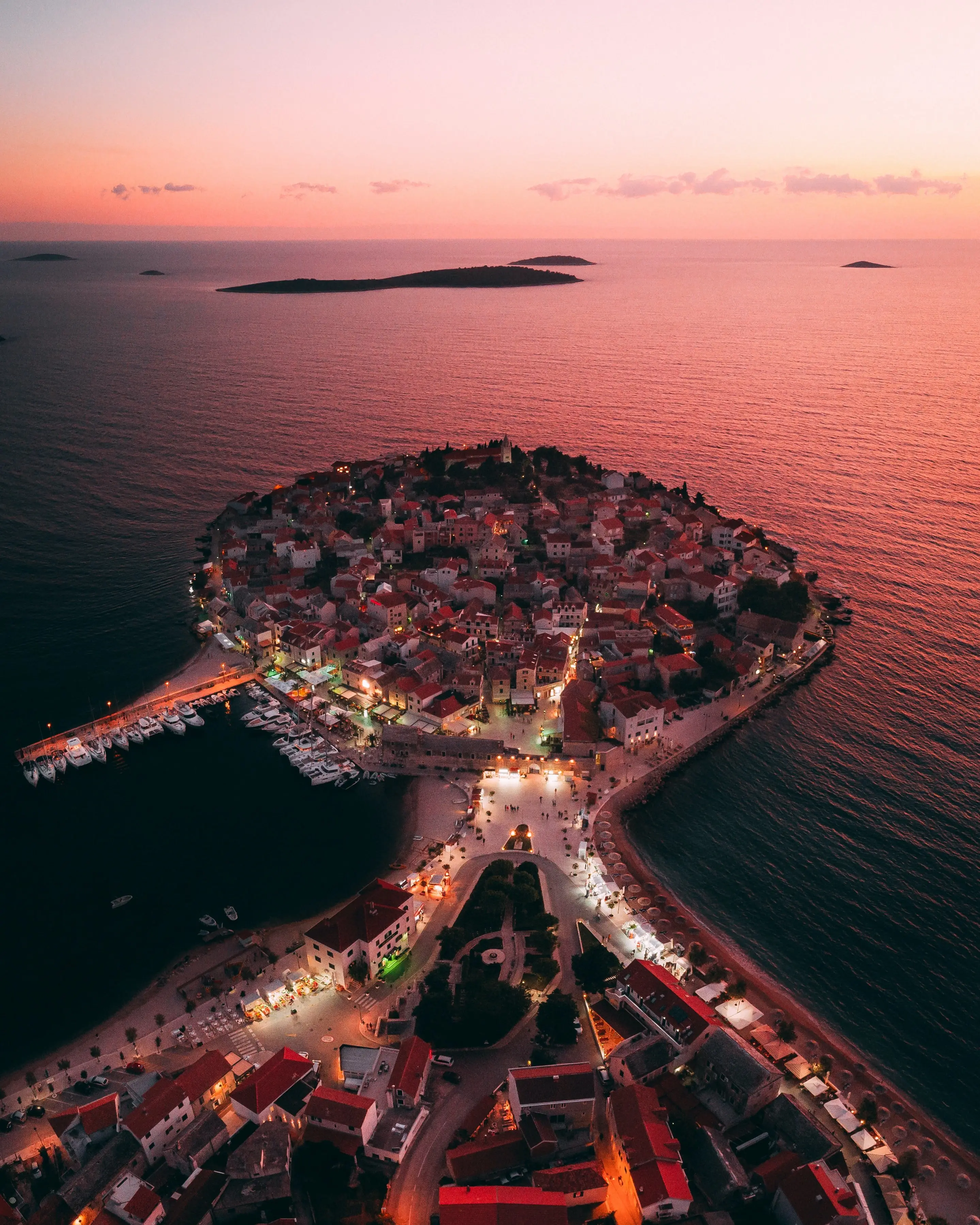
Day 8: Piškera - Žirje
The island of Žirje is a 16,2km2 island in the Šibenik archipelago. It is very well indented and scarcely populated. It is mostly covered in wild Mediterranean growth(macchia), and has only one settlement: Žirje, which is connected to the cove of Muna, its only port, by road. The cove of Muna offers berthing up to 13m deep and is exposed to the north winds.
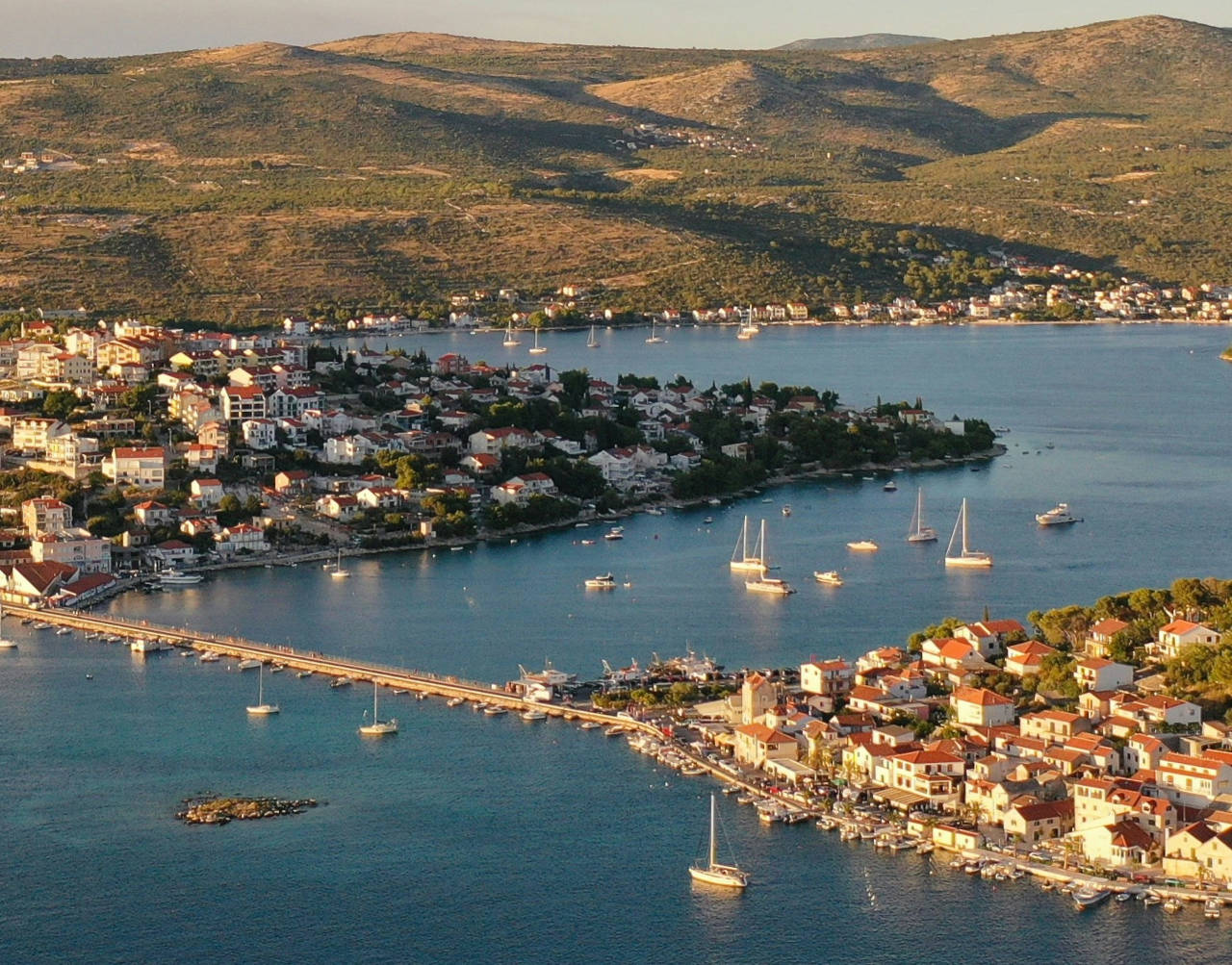
Day 9: Žirje - Rogoznica
Rogoznica is a small town 32 km south of Šibenik, whose coastline is one of the safest natural harbors in the Adriatic. Berthing along the riva is up to 2m-4m deep, with the best place to berth being Marina Frapa, not far from Rogoznica center. Marina Frapa is a modern marina, offering 300 berths as well as 150 dry berths, with all the accompanying content.
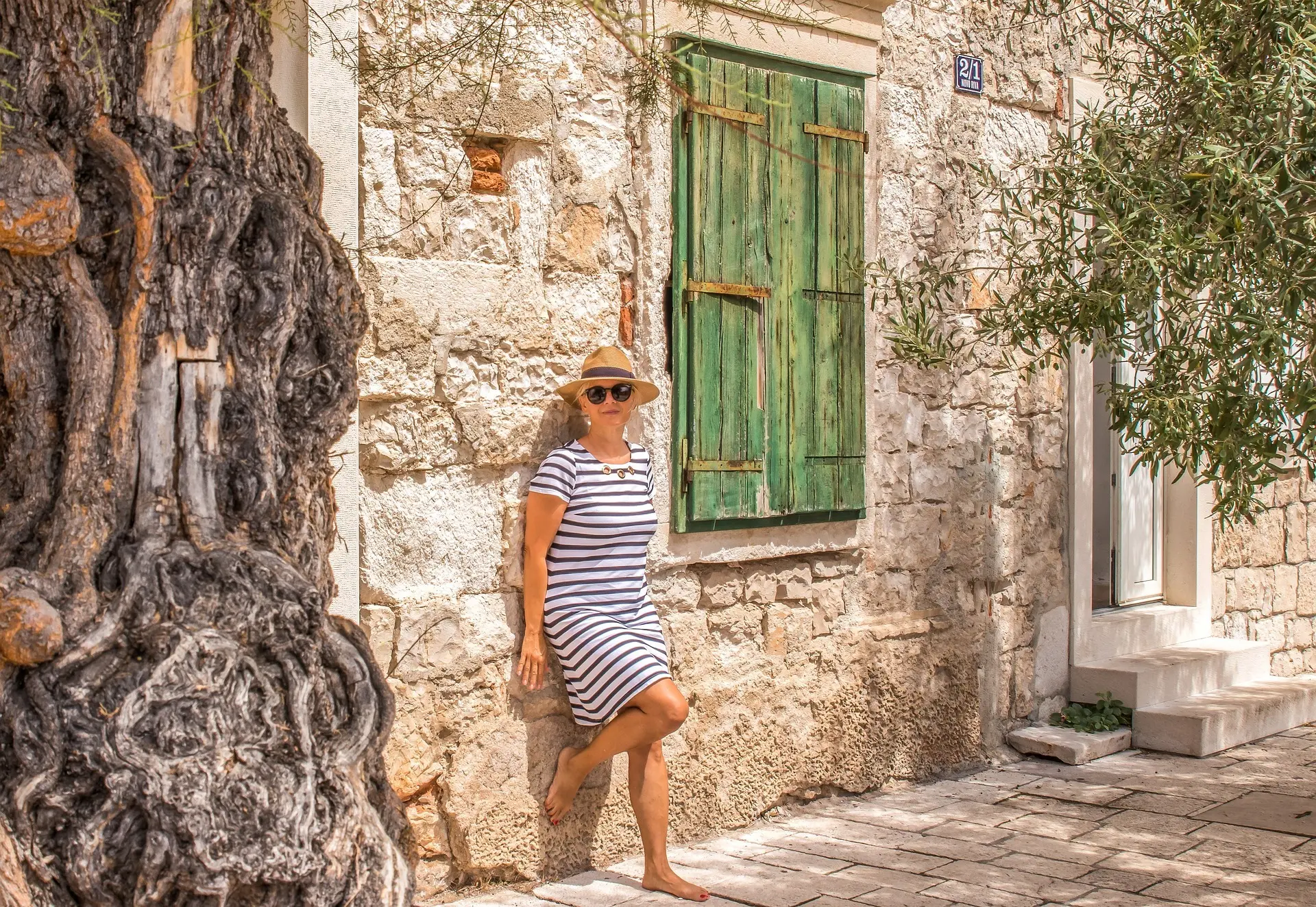
Day 10: Rogoznica – Maslinica (Šolta)
Maslinica is the only settlement on the island of Šolta's western coast. Its many exquisitely wind-shielded coves and inlets, and its mini-archipelago of seven isles, make Maslinica an extraordinary nautical, diving, and underwater fishing destination. Its most visited cove is the Šešula cove, due to its excellent position and protection it provides.
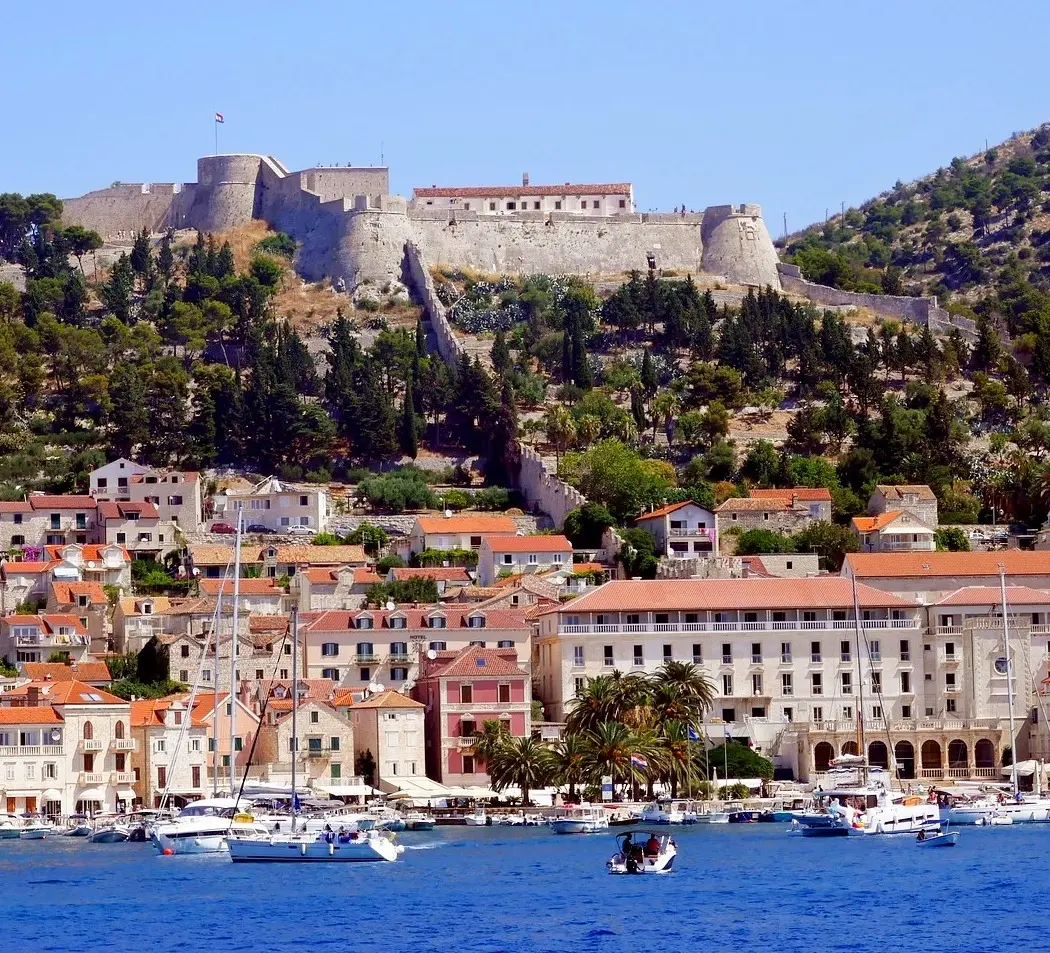
Day 11: Maslinica - Palmižana
Off the southwestern coast of the island of Hvar, a group of around 20 isles and reefs is situated, known as the Pakleni otoci (infernal islands). Pakleni otoci are a unique and the most distinguished natural beauty of Hvar. Forested isles amidst crystal clear blue sea, countless secluded beaches and beautiful desolate inlets, present a far-known sunny Arcadia of Hvar. The best shelter on Pakleni otoci is the ACI marina Palmižana on the northeastern coast of the isle of St. Klement, which is shielded from all winds. However, in a strong southwestern wind, some tidal waves may occur. Palmižana is the oldest and best known resort on Hvar. It is surrounded by thick pine forests and various other exotic vegetation..
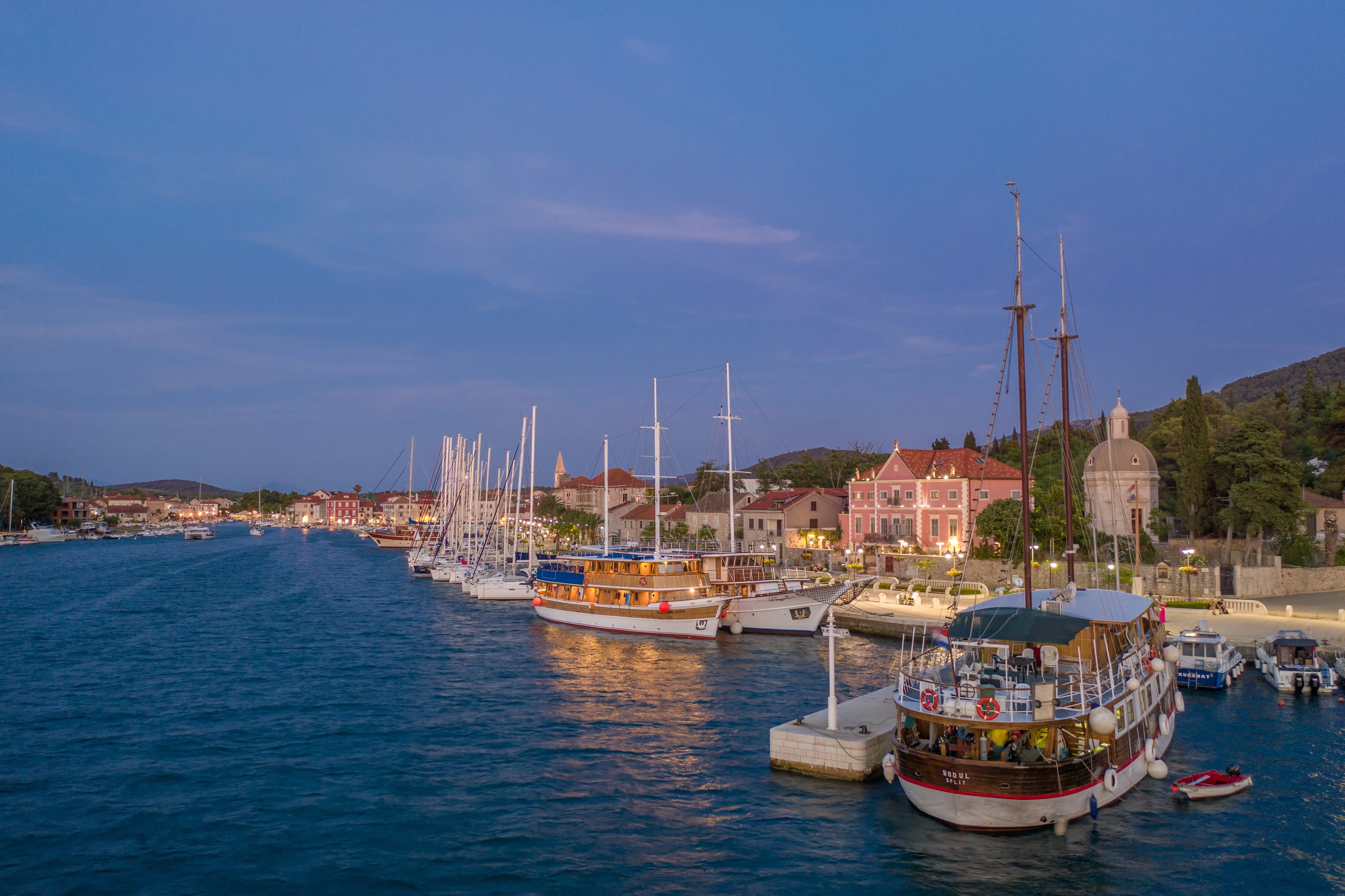
Day 12: Palmižana - Jelsa (Hvar)
Jelsa is a quiet little town on Hvar, close enough to the main tourist resorts for all the benefits; but still far enough to maintain some of the peace and quiet that traditionally envelops Adriatic islands. The port of Jelsa offers berths up to 12m deep, and is exposed on the north side; as such it is not recommended for berthing in strong bura.

Day 13: Jelsa - Milna (Brač)
Milna is the most protected as well the most beautiful port on the island of Brač. Protected from stronger winds and refreshed by the maestral wind of summer afternoons, it is the ideal haven for people and boats alike. Milna is situated at the bottom of a spacious cove at the western coast of Brač. Crystal blue sea, shades of centennial pine forests, sunlit facades built of Brač stone, ideal diving conditions, domestic and healthy food - all the reasons for coming to this beautiful Mediterranean town. There is a large selection of excellent fish restaurant, pizzerias and many caffe bars in Milna, situated in the immediate vicinity of the sea. ACI marina Milna is located in the southeastern part of the Milna cove, adjacent to the town.

Day 14: Milna - Split
Return to base.

